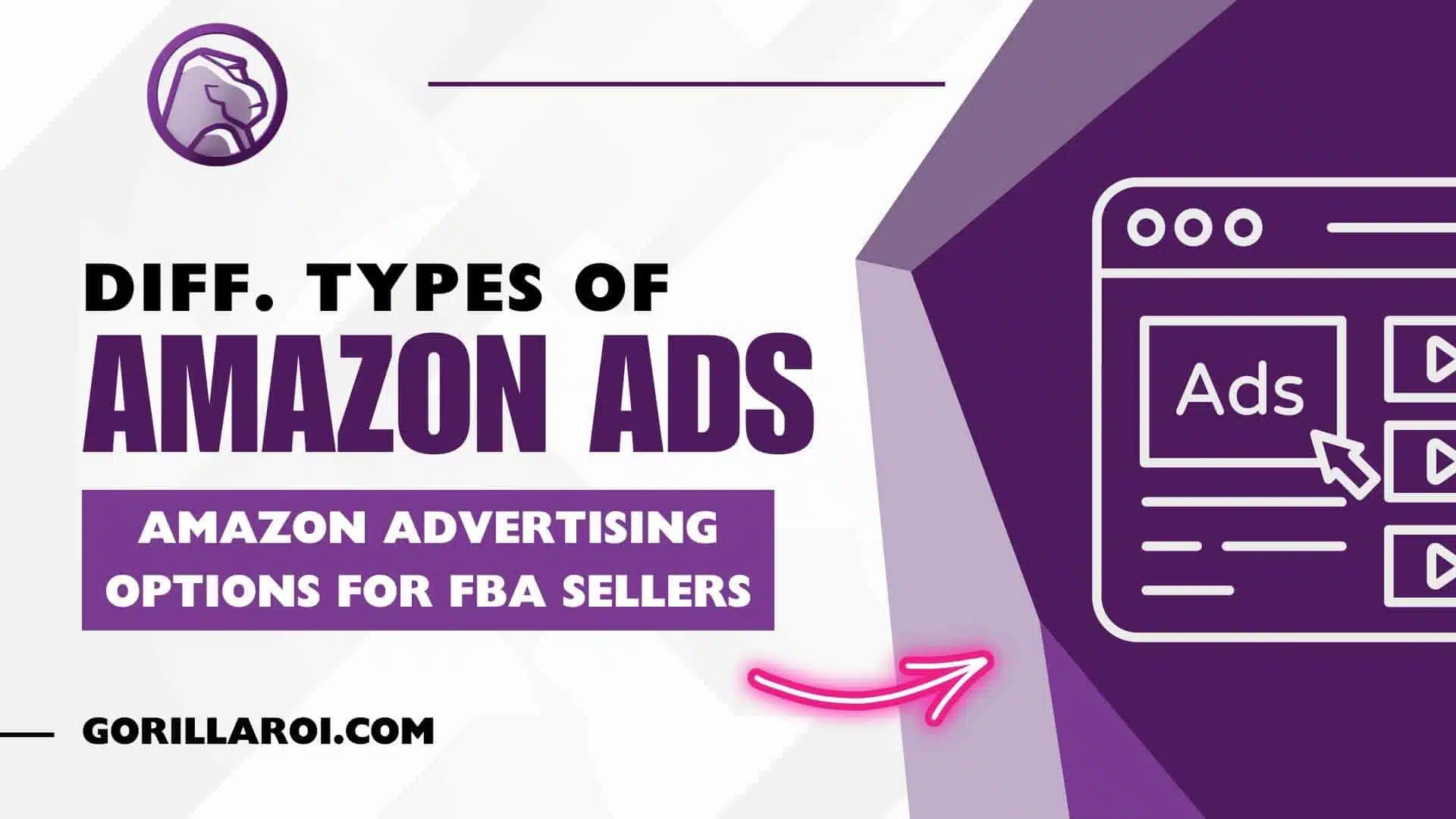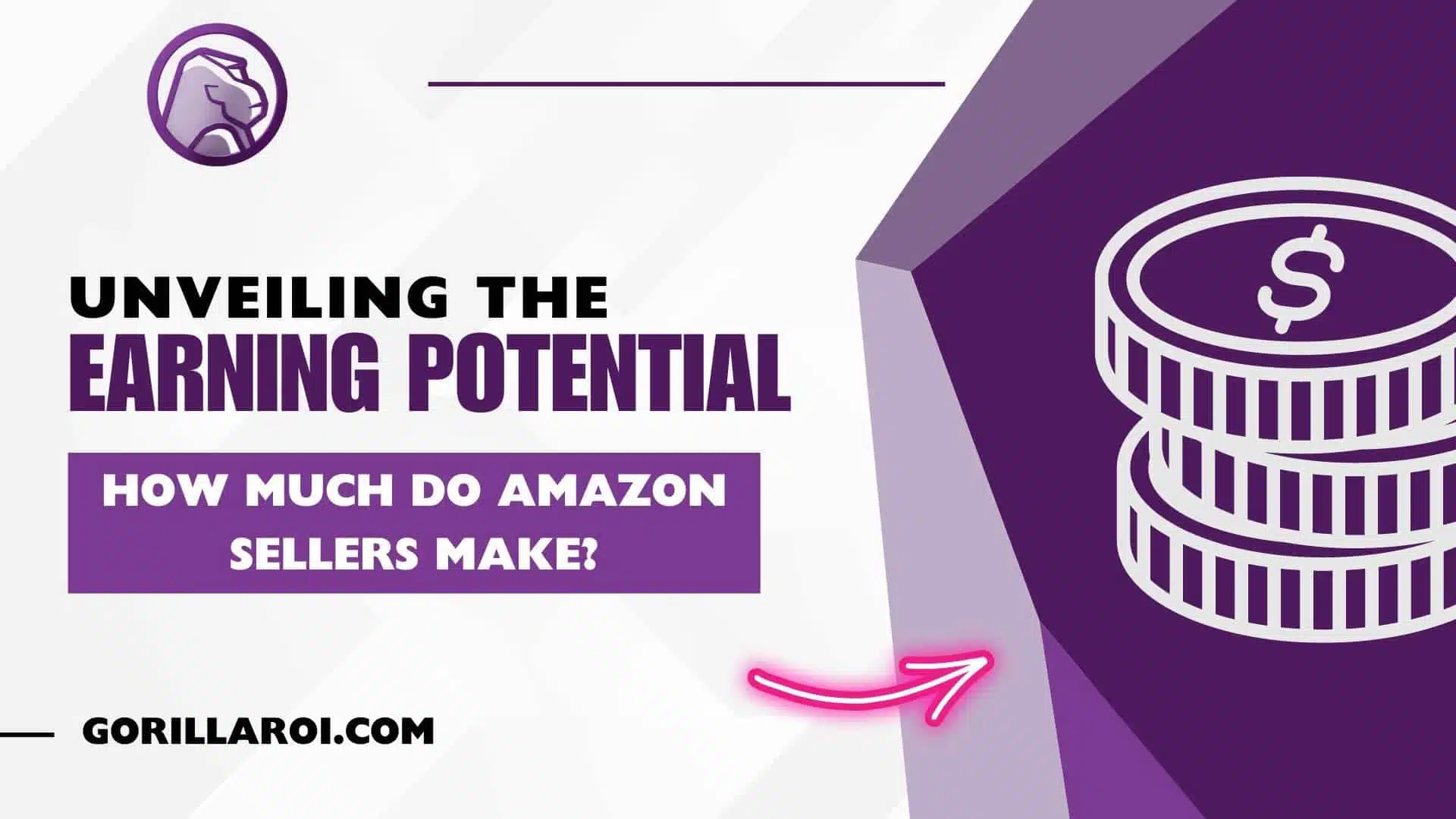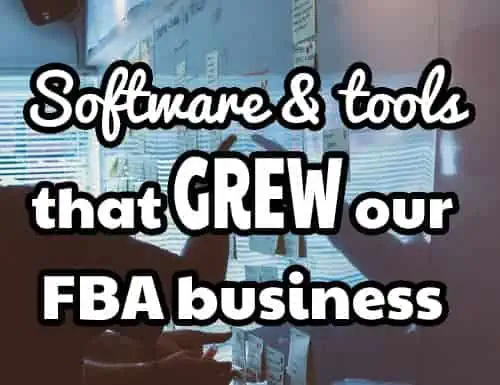What you’ll learn
- A review of the best software for FBA sellers that we use in our operations
- Which FBA tools that are a must-have for us
- How our team uses these tools for Amazon
This is going to be interesting.
I know people are always interested in knowing how others run their business, so I’m going to share the best software for FBA sellers and other vital tools we use to run our Amazon business.
It’s not just limited to how we run the Amazon side of things, but other things like customer service, project management, internal operations, and aspects outside of Amazon.
I originally sent this out in an email, but I’ve added more examples and explanations to help you out.
This list is not complete or the proper way of doing things. It’s just what works for us. If you have some cool implementations on how you do it, leave your thoughts in the comment section below.
FBA tools used to run Amazon

We don’t use many FBA software tools for Amazon. If you ask most big sellers, they don’t as well. There are some vital ones, but as you get more experienced, you tend to need and use less.
Scouting and research tools
- AMZ SCOUT
- Amazon Storefront
- Retail stores
If you’ve been reading my newsletters for a while, you know how I feel about scouting software for FBA sellers.
I’m not a fan and I only use it to get rough numbers on potential products and ideas that I have in my head.
I never use it for sourcing actual products.
The main issue is that anytime you run the tool on a product, it gets stored on a database for a million other sellers to look up.
I do not run the tool on any of our products for the same reason. No need to share our product and data with the masses.
However, I do use AMZ Scout over Jungle Scout. Purely for the reason that more sellers use Jungle Scout vs AMZ Scout.
To get accurate ideas and data on what is working and what isn’t, using the Amazon Storefront strategy is one of the best options. Amazon lists in order of best to worst selling items in your storefront.
All you have to do is look up competitor storefronts and you can immediately know which one is their top seller.
This way, it’s easy to expand your own product line and you have the most accurate data right in front of you.
The other option is to visit a big box retail store. Our top sellers have come like this. If a big retailer like Target, Walmart, Bed Bath Beyond, Home Depot or Lowes is carrying it, it means the market is big.
From there, we narrow it down a little and find a specific product that looks to be doing well. We then find ways of improving it and putting a unique spin on it.
Knowing that China sellers are copycats, they just want to private label something. i.e. ODM products.
Since we want to be unique and sell it in the long run, we create our own version to own the mold and prevent China sellers from selling the same thing. The more expensive and harder it is for a seller to copy our product, the bigger the barrier to entry.
One of our best selling products used to sell 100 units a day. That has now dropped to 20-30 because of so many copycats. It was an easy product to copy and they got away with it.
Since then, we’ve decided that if a product is too easy to copy, we don’t want to sell it.
Listing software
- None
We still use CSV files or manually create listings from seller central as we don’t deal with thousands of SKUs. And I haven’t come across any good software that can handle the constant changing environment of seller central.
Customer follow-ups
- None for Amazon
Amazon blocked us from sending emails to customers. Not that it matters anymore with Amazon clamping down on sending emails to customers. The whole point was to use emails to request a review for the product they purchased, which is now against ToS.
Using automated email services is a thing of the past.
Promotion, launches, product reviews
- ManyChat
Used to do promotions heavily back in the day, but stopped for a long time.
But now it is near impossible to get new products going or compete in tough categories.
Amazon is cracking down anyways and I’d rather let the shady sellers get banned.
But launches are still necessary. Rebates can work, but it’s ultra-expensive to use a service.
The goal for us is to try and get the cost of a review below $20 after accounting for everything.
Most of our products retail for less than $20. Spending in excess of that is a bad ROI.
Let’s say I give away 100 products.
- COGS is $200 ($2 each)
- Ad spend is $400
- I received 3 reviews from this campaign
The total spent to get a review is $600.
3 reviews = $200 spent per review = horrific.
Calculate it like this to figure out what you can spend and where the best channels are for you.
So far, it’s definitely within the Amazon ecosystem of Vine or Early Review Program.
We do use other strategies but because of all the naysayers and self-policing sellers, I’ll leave it out of here. If you want to know, drop a comment or email me.
Keyword generators
Lots of free and good tools out there. The one that we pay for is KWfinder (Mangools) as we use it a lot for SEO and other content.
Keywordshitter is awesome. Check it out if you haven’t heard of it or used it before.
Data and analytics
- Google Sheets
- Gorilla ROI
Yes, it’s a plug for our tool, but only because it does everything that we need.
- Gets Amazon reviews
- Inventory management and demand planning and forecasting
- Buy box hijacking monitoring
- Custom sales reports
- Team sharing
- Profit and loss reports and financial analysis
- Amazon seller fee analysis
The latest spreadsheet we created internally is a PPC spend analyzer and optimizer. Not the typical style that you see with other software.
This spreadsheet is specific to our internal KPI. By being able to pull sales totals over various periods and combining it with the PPC spend, it has already become a very powerful tool in understanding our current performance and where we need improvements.
We used to use InventoryLab to get the fees and charges, but their numbers are off and Gorilla ROI pulls in all the fees and charges, much more accurately and is customizable.
By creating custom spreadsheets with Google, it’s become like an “internal app” that we can create and edit on the fly without having to know any code.
There are different spreadsheets for specific employees and departments so that everyone understands what their roles and KPI’s are.
Designs
We have our own designer that creates all the marketing images, packaging, mockups, and digital stuff.
No such thing as FBA software, expensive agencies, or worse, Amazon automation marketing tricks.
Just a quality designer that we found proactively using upwork and dribbble.com
Rather than posting a job and waiting for somebody to come by, we have found our best designers and a team we work with by manually going through hundreds of portfolios and contacting the designer directly if we felt they matched our design style.
I used to do it all myself and I’m capable, but not great.
Since we started outsourcing this area I can focus on doing the things that scale and to do tasks that bring in revenue – not tasks that save money.
All in all, we keep things simple on the Amazon side.
Ecommerce outside of Amazon

This is where things get different.
Shopping cart
- Wordpress and WooCommerce
I have used Shopify in the past. We used to sell high-end ceramics so we spent a good deal of time and money on the Shopify site. The pro is that it’s easy to set up and get running, but if you do any decent amount of sales, it becomes expensive fast, and severely handcuffing.
Shopify makes you pay for every-single-little-thing.
So for our current store, I initially chose Prestashop which was good for a couple of years, but I wanted more flexibility and switched over to WordPress and WooCommerce in 2019. On a related note, it might be worth checking out Elementor if you’re looking for even more flexibility. The website builder boasts a powerful code-free WooCommerce website builder that can really prove valuable.
It’s free, all the things you pay for in Shopify are included. It works out of the box. Plenty of templates you can purchase and customize.
It’s great and functions very well, but I’ve changed my strategy of converting our site towards content-heavy, landing style pages, and I need something very flexible and more of a CMS than a shopping cart.
Hence the move to WordPress and woocommerce.
I’ve already applied it to one other site and it fits what I’m trying to do, so I’m in the process of moving our main money site to this new format.
It should supercharge conversions and boost our SEO as we get content-heavy and keyword-rich.
[update] After switching all sites to woocommerce and focusing on making each listing page a long sales page with tons of content (Amazon does it just like this) SEO has received a boost, more keywords are ranking and traffic is increasing.
With this new format, I’m also able to create single Amazon niche sites on the fly. I can literally go from nothing to working and functioning woocommerce site in less than a week with a 100% custom design.
To make shopping cart experience better, it is necessary to buy SSL certificate. SSL certificate secures the data going between the server and the browser. There are many free ones available but make sure it is set to update or renew automatically.
Email marketing
I used to use Drip. Now I use Sendinblue as it’s simple, affordable, and has all the tools you find in more expensive software like automation, but targeted for smaller-sized businesses.
If the e-commerce site grows substantially, I’ll need to switch back to Drip or something more powerful, but for now Sendinblue works perfectly for us.
It was a hassle getting things set up, but now that it’s running, no need to fix what’s working. Convertkit are also great tools for email marketing.
Customer service
- Tidio chat bots
- Freshdesk
Tidio is now out auto FAQ chatbot. With the years of emails and questions we’ve received, I’ve created a very extensive flow that answers literally 9/10 questions people ask.
Rather than having to answer emails, the chatbot now automatically provides the response.
So far, it’s saved us several hours a day from having to personally respond to each question, even if it’s one that we’ve answered a million times already or have it on the website.
People just don’t read.
Freshdesk is our help desk and ticketing system.
People send emails, it gets registered into the system for someone in our team to answer. Rather than sending contact forms, questions, and emails to a person’s inbox, it is better to centralize such communication into a single location.
Payment Processor and Gateway
- Stripe
No introduction is needed.
Gone are the days when you had to use old services that stopped innovating and helping sellers like Authorize.net.
Stripe is just easy. No contractual obligations. The fees are decent. If you do volume, you get a discount. They really changed the landscape for online selling.
Integrates very nicely with woocommerce.
If you have multiple stores, you can connect them all to one Stripe account which makes things so easy.
Webhosting and managed IT services
I’ve tried a LOT of different Web hosting over the past decade of running online businesses. Everything from cheap web hosting to best magento hosting.
From supercheap ($2/mo), to cheap hosting like bluehost and godaddy (from $5/mo), to better and more expensive dedicated VPS solutions ($50-200/mo), cloud servers (several hundred) and so on.
At the moment, I’ve found the best webhost for our ecommerce needs. That’s Vultr. Cheap, cloud hosting.
I pay $10 for some awesome specs because our website isn’t huge and slammed with traffic.
For any small to mid size site, you can’t beat these guys.
Very reliable, very affordable, very good speeds and each of my sites is set up separately.
The downside is that for most people who don’t have developers, you have to pay extra for CPanel. A lot of people nowadays want a Wordpress managed server, which I find to be a waste of money.
Then again, I have my own team of devs, so it’s a no-brainer for us to custom set up servers based on our needs.
If you get to the point where you’ve outgrown the basic operations but don’t want to deal with hiring your developers, dev ops, server guys and all that stuff, definitely consider looking into outsourcing your IT services and operations. Whether you are looking for a managed IT service from Chicago, or Sydney or London, there are many options to outsource highly technical and intensive parts of your business which won’t be your strength.
Just like how you shouldn’t be doing your own bookkeeping, but be outsourcing or hiring someone to do it, IT operations and services is another area to consider having managed.
Communication and Operations
This is where the heart of our operations lie. It’s a simple and cost-effective system we have set up.
We mostly use 3-5 tools that handle everything. But the heart and soul is Zapier.
- Zapier
- Trello
- Slack
- Gmail
- Google Docs
If you don’t know zapier, the software allows you to relay data from one software or tool to another. Think of it as a traffic director.
It’s the same as how Gorilla ROI operates. We connect Amazon seller central with Google Sheets.
Although we only support 1 integration (Amazon to Google Sheets), with Zapier, it supports hundreds of different software that you can hook up to send data back and forth.
All without code.
Here’s an example of how we use it.
- I have a customer that likes to text me his wholesale orders
- From my phone, I forward the text to a specific gmail like “wholesaleordersgorilla@gmail.com
- Zapier recognizes this email based on the subject and from address.
- Zapier is triggered to forward the message to our Trello board for wholesale orders.
- Somebody in the orders team will see the Trello card that is created and fulfill the order.
Another example related to Amazon is:
- Anytime an Amazon customer messages us directly, it is directed to a single and central email account.
- We have this email set up with Google suite.
- Zapier recognizes the from address and subject.
- Zapier forwards it to a slack channel that somebody monitors to follow up.
- This way, every message is answered or handled within 24 hours.
An implementation method with Gorilla ROI is:
- When a Google spreadsheet using Gorilla ROI is updated
- Zapier is triggered that a change was made on this spreadsheet
- Zapier can then forward the spreadsheet to team members, or alert somebody or do hundreds of other things.
You can create multiple levels of different tasks too.
After the spreadsheet is updated, I could have it automatically forwarded to gmail, and then uploaded to Trello, send a notification to slack and so on.
It’s all based on the idea of “If This Happens, Then Do This”.
Can’t live without it.
Has automated so many of the little manual tasks that needlessly eats time. We use it in ways that you haven’t even thought of that I can’t share.
If you start using it, you’ll discover ways to optimize your workflow with the software and the best FBA seller software that works for your business.
For now, hope you got some insight and ideas about improving your own operations.
If you have some cool implementations, please share!
Comments
Related Posts

Different Types of Amazon Ads: Amazon Advertising Options for FBA Sellers
There are different types of Amazon ads. Amazon offers several…

How Amazon Sellers Use the Amazon Wishlist to Boost Sales
Amazon is a vast and competitive marketplace where millions of…

Unveiling the Earnings Potential: How Much Do Amazon Sellers Make?
Are you curious about how much do Amazon sellers make?…
Ready to sync your Amazon data to Google Sheets?
Gorilla ROI is the easiest way to automatically sync your Amazon data to Google Sheets 24/7 to match your business needs. Uncover actionable insights to sell more and beat the competition.




